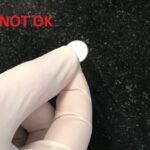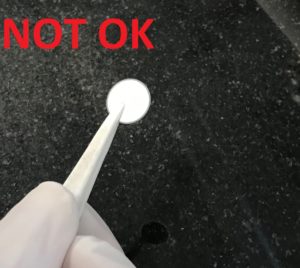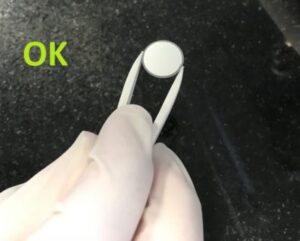Crystals are very sensitive devices. Below are some best practices in using crystals for ensuring the best performance. Click PhillipTech Crystals best practices online of this article.
- DO NOT touch crystals with fingers. Fingers contain trace amounts of oil that transfer easily to the crystal surface and destroy vibrating quality. Furthermore, while gloved hands are an additional layer of protection, we do not recommend directly touching the crystal with gloves or anything other than tweezers.
- DO NOT use crystals that have fallen to the floor or touched an unclean surface. These crystals are contaminated by dust and debris and will no longer function properly.



- DO use tweezers at the edges of a crystal for handling, moving or placing. We recommend soft plastic or nylon tweezers to reduce the possibility of scratches.
- DO use nitrogen or dry air to blow off the crystal surface prior to using.
- DO ensure your crystal has the proper electrode material for your process. We recommend GOLD for low stress metals and ALLOY for high stress metals and dielectrics.
STANDARD crystals are the industry base model and are appropriate for use in non-critical applications.
PREMIUM crystals are better for high-accuracy and high-precision applications such as OLED
RC crystals are uniquely devised and patented for extremely high accuracy and ultra-critical applications. We recommend RC for
OLED and optical coatings.